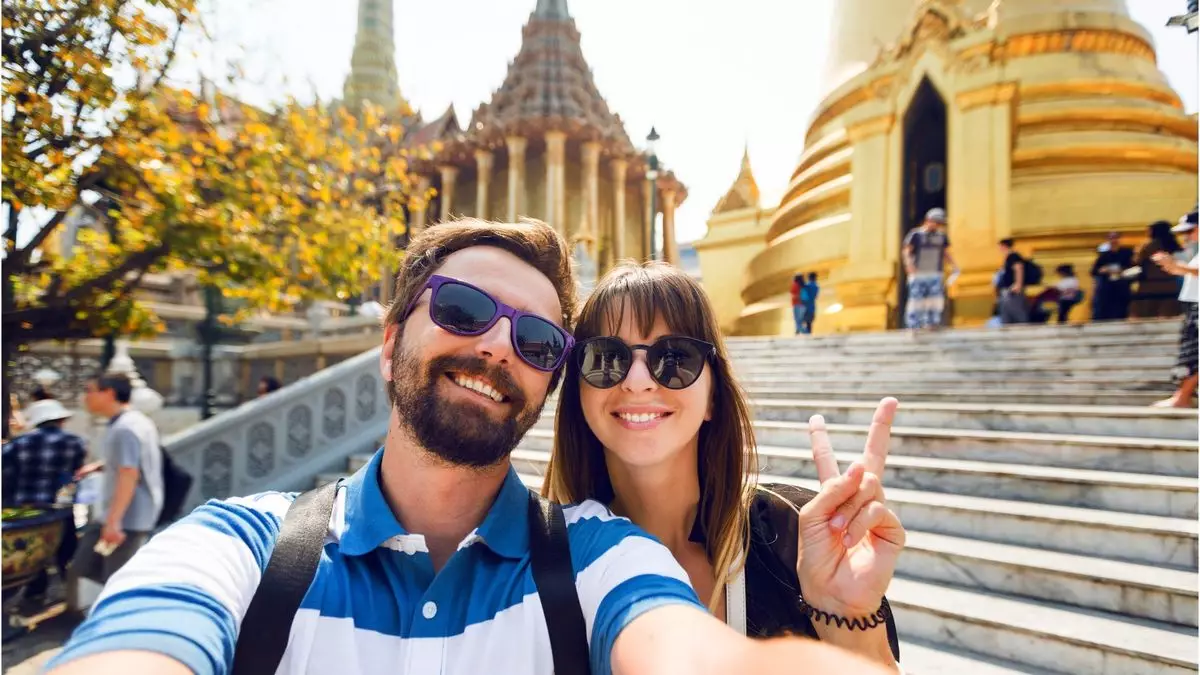Angkor Wat, Cambodia’s majestic 12th-century architectural marvel and a UNESCO World Heritage Site, stands as a testament to the region’s rich cultural history. However, recent years have revealed a dramatic shift in visitor dynamics, particularly in light of the lingering effects of the COVID-19 pandemic. While Angkor Wat attracts visitors eager to witness its iconic sunrise views, ticket sales remain a stark 45% below pre-pandemic levels. This decline can largely be attributed to the conspicuous absence of one of the region’s primary visitor demographics: Chinese tour groups.
Asia’s tourism landscape has shown uneven recovery, with varying rates of reopening across different countries, compounded by economic challenges and fluctuating currencies. Many potential travelers from nearby nations, including China, Japan, and Korea, are opting for domestic trips or short-haul getaways rather than embarking on international adventures. The challenge for Angkor Wat lies not just in numbers, but in the shift of regional travel patterns, compelling potential visitors to choose destinations closer to home.
In observing the trends in travel from Asia, the top three source countries—China, Japan, and Korea—play a pivotal role in regional tourism. According to DidaTravel, a prominent travel distributor from Shenzhen, there has been a marked increase in outbound travel from China to Japan, signifying a 200% rise in bookings year-over-year. This trend underscores travelers’ desire to explore destinations with unique cultural experiences, although the same enthusiasm is not mirrored in Japan’s outbound travel, where currency depreciation has made international travel less attractive for Japanese citizens.
Countries such as Japan, still navigating their post-pandemic recovery, face significant hurdles. The weak yen creates an economic barrier, dissuading many residents from traveling abroad despite their historical favor for international destinations. While travelers from China may capitalize on the opportunities offered by discounted shopping in cities like Tokyo, the overall outbound travel figures from China have yet to fully bounce back to levels seen before the pandemic, marking a cautious yet gradual revival.
As a consequence of the economic landscape and remaining travel barriers, it is clear that domestic tourism is leading the charge in the recovery of the Asian travel industry. Companies such as the China Youth Travel Service have observed a tendency among travelers to prefer local destinations, recognizing that cross-country journeys may be financially prohibitive. Consequently, domestic travel has emerged as the mainstay for many, continuing to shape the travel habits of those within the region.
For businesses operating in English-speaking markets, there is a notable surge in bookings geared towards Japan and Southeast Asian nations, including Vietnam, Cambodia, and Thailand. A significant 41% increase in travel to Asia has been noted for 2024 compared to previous years, highlighting an undeniable pivot towards these vibrant destinations as tourist hotspots.
The luxury travel sector presents another facet of Asia’s evolving tourism industry. While popular destinations such as Japan continue to attract North American travelers, the perception of value associated with travel has become increasingly nuanced. Despite the weaker yen, the costs associated with luxury offerings—such as accommodations, guided experiences, and transport—have surged in some areas, causing potential travelers to reconsider expectations regarding affordability.
Additionally, cruise itineraries along the Mekong River have gained traction, with full bookings anticipated from November through April, according to AmaWaterways. The demand for river cruises in Southeast Asia has prompted the company to expand its fleet, setting the stage for more robust recovery strategies.
The pandemic has fundamentally transformed traveler habits, moving from single-destination trips to a more elaborate approach involving multiple stops throughout Asia. Travel companies are responding to these changing preferences by offering combined packages that span various nations within the region. Customers are increasingly interested in exploring interconnected journeys that allow them to experience countries like Vietnam and Cambodia together, or pairs such as Japan and Korea.
These trends point to a broader reassessment of travel intentions post-pandemic. As travel patterns continue to evolve, the landscape of Asian tourism promises to engage a diverse array of visitors seeking a rich tapestry of experiences that connect history, culture, and modernity. The future, it seems, is not just about recovering lost visitor numbers, but redefining the expectations of travelers eager to explore the wonders of Asia—one destination at a time.


Leave a Reply